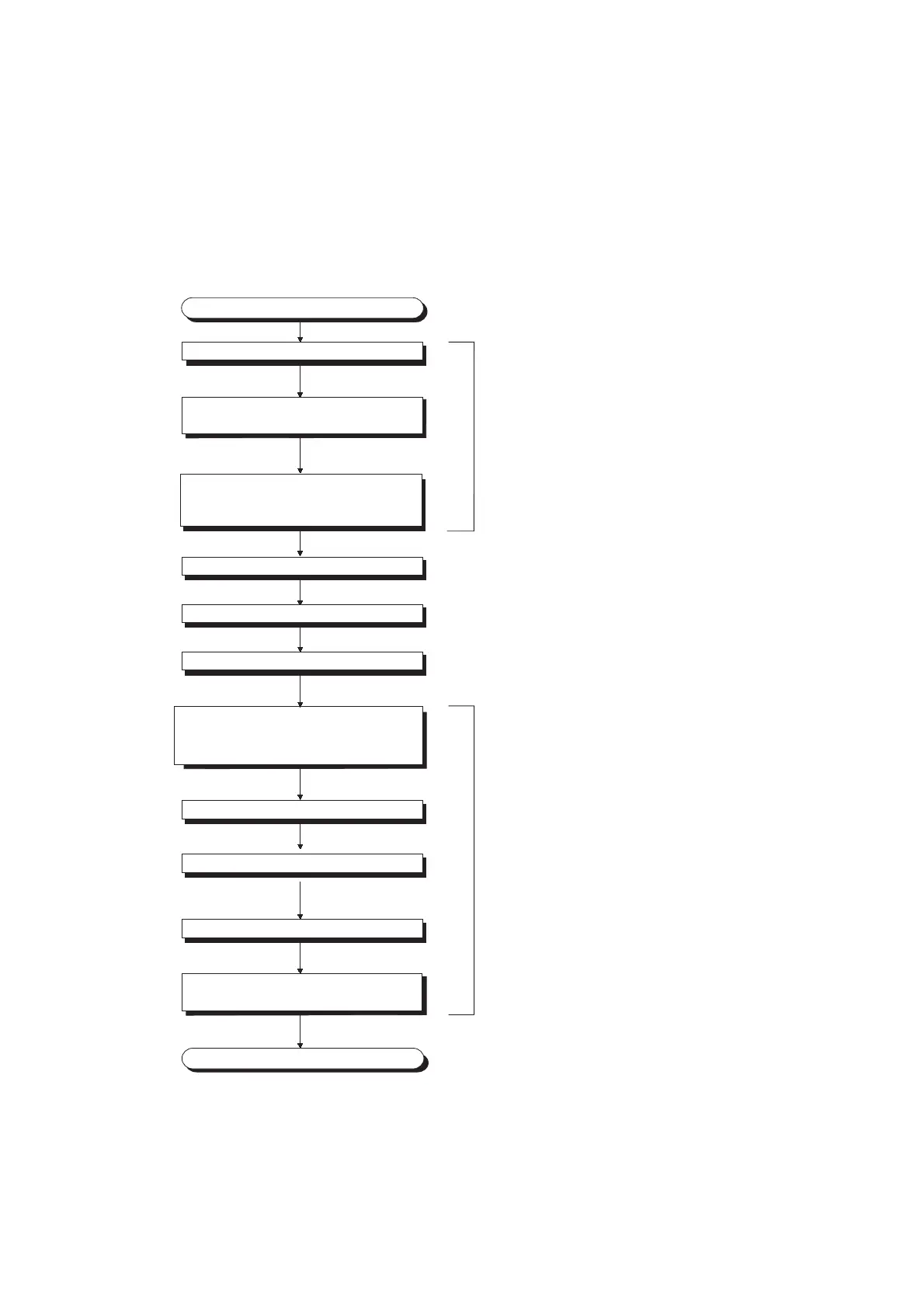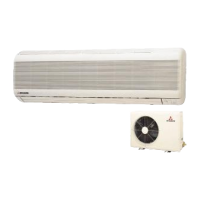126
(b) Saving and restoring by reading from and writing to the buffer memory
In the buffer memory, use Pass data classification setting (Un\G200), CH1 Industrial shipment settings offset
value (L)(Un\G202) to CH4 User range settings gain value (H)(Un\G233), and User range write request (YA) to
read the offset/gain values from the source A/D converter module, then use the buffer memory again to write to
the destination A/D converter module.
The procedure for using the buffer memory is described below.
• To restore offset/gain values onto a new replacement module:
*1 When replacing modules, you can prevent the saved offset/gain value data from getting deleted, by doing one of the
following before turning the power off:
• Use latch settings for the internal device of the destination module.
• Save the data onto an SD memory card.
To write data: use SP.FWRITE instruction
To read data: use SP.FREAD instruction
• Store the saved data
Records the data stored in Pass data classification
setting (Un\G200) and CH1 Industrial shipment
settings offset value (L) (Un\G202) to CH4 User
range settings gain value (H) (Un\G233).*
1
Replaces the A/D converter module.
Turns on User range write request (YA).
Checks an Offset/gain setting mode flag (XA) is on.
Turns off User range write request (YA).
Checks that the replaced A/D converter module
operates with the restored offset/gain values.
End
For the destination A/D converter module
Writes the recorded data to Pass data classification
setting (Un\G200) and CH1 Industrial shipment
settings offset value (L) (Un\G202) to CH4 User
range settings gain value (H) (Un\G233).*
1
Turns the power off.
Turns the power on.
Start
Sets values in Pass data classification setting (Un\G200).
Turns off, then on, and off again Operating
condition setting request (Y9).
For the source A/D converter module




